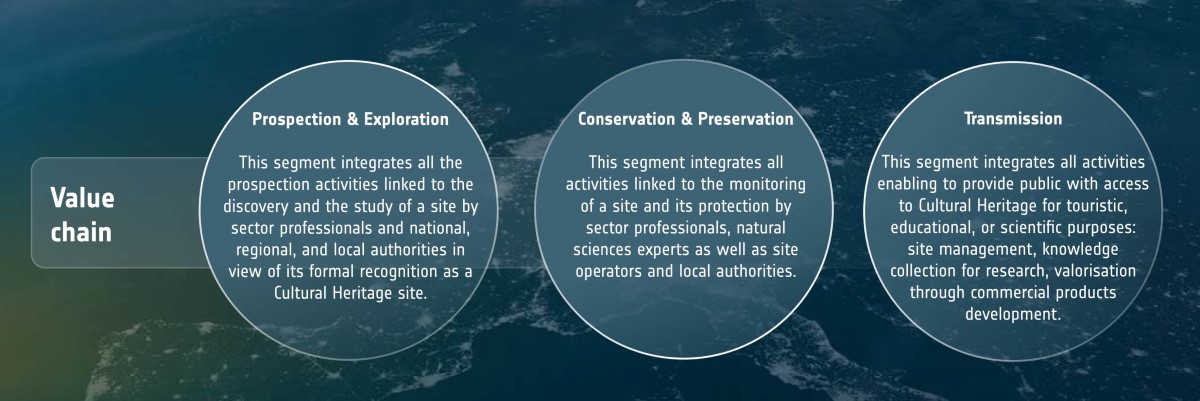Cultural Heritage is gaining attention, notably from the public sector, which provides the largest part of funding, but also from the private sector, that is trying to seize the associated growing commercial opportunities. Indeed, in the last decades, in addition to the historic, social and anthropological dimension, Cultural Heritage has also become a major driver for economic growth and sustainable development by attracting tourists which in turn boosts the economies of the destinations visited.
As attention to Cultural Heritage management is still very much driven by public actors, so is the use of satellite remote sensing data in the sector. On the European level, UNESCO and ESA have long been working for the integration of both fields, notably through the joined launch of the “Open Initiative on the Use of Space Technologies to Support the World Heritage Convention” in 2003. Since then, ESA has been developing various projects across the whole Cultural Heritage management value chain.

Learn more about the emerging needs and space added-value for cultural heritage use-cases in our latest report.
Download the full report here